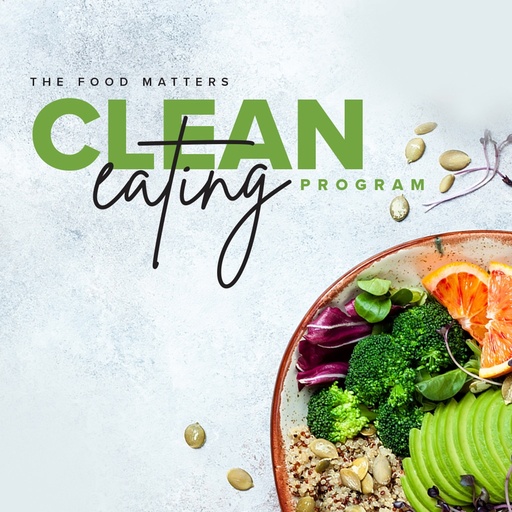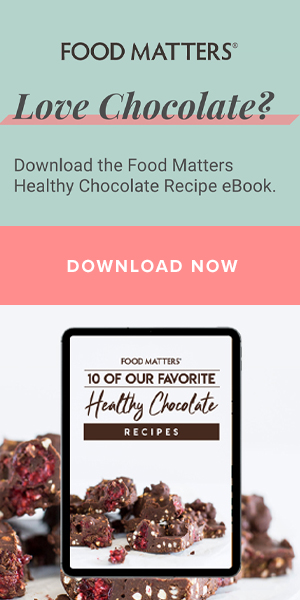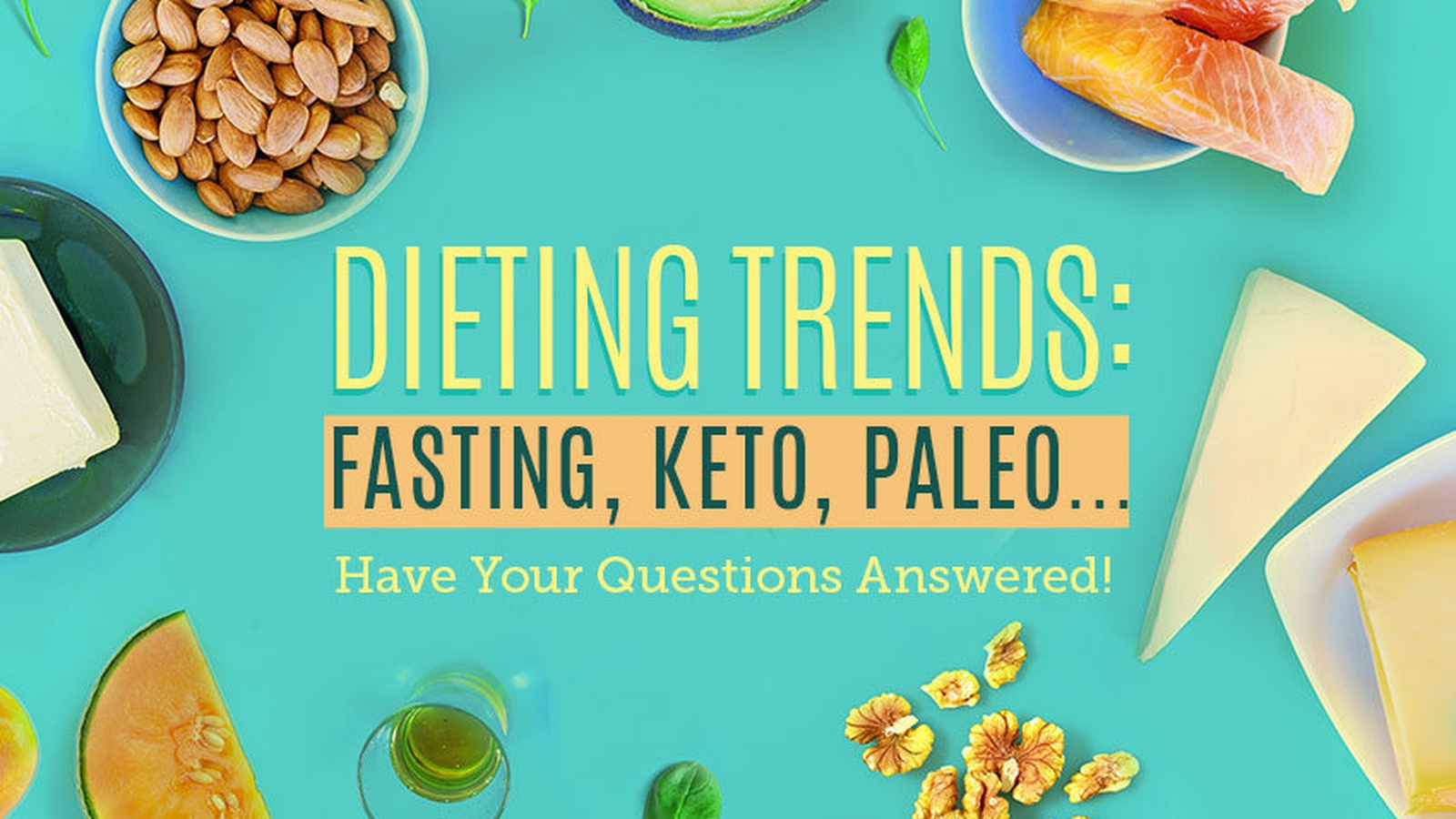Dieting Trends: Fasting, Keto, Paleo... Have Your Questions Answered!
Your best friend switched to the Keto diet and experienced incredible results, but when you tried it you didn’t have quite the same success. What went wrong?
It’s a question we come across all too often and the answer is simple – our biochemical individuality means we all have a different makeup and need different things at different times in our lives in order to thrive.
Biochemical individuality is a topic we dive deep into in our upcoming Food Matters Nutrition Certification Program. After all a knowledge of this foundational principle is essential to understanding what dietary protocol is best for you.
With so many diets available, each with their own set of rules, it can be confusing which is best for you, so after you've explored the program, we’ve come to the rescue to drown out the white noise and help you make an educated decision.
Ketogenic (keto) Diet
The Keto diet is an ultra-low carb, high-fat diet that is designed to put your body into a state called ‘ketosis’ (which means your body becomes more efficient at burning fat as a fuel source). It’s similar in some respects to previous fad diets you maybe had heard of such as the ‘Atkins’ diet.
Dr. Josh Axe suggests limiting your carbohydrate intake to around 30-50 grams of net carbs per day. To calculate net carbs, you subtract the grams of fiber from the total grams of carbohydrates. To give you an example of what this looks like, 1.45 cups of blueberries is 25g net carbs, 12 oz (two bunches) of kale is 18g net carbs, three cucumbers (30 oz) is 26g net carbs, eight zucchini (35 oz) is 20g and 5.75 cups (20.5 oz) of broccoli or cauliflower is 16g net carbs.
On the keto diet, high-fiber, low-carb foods are king, so load up on non-starchy vegetables such as green beans, broccoli, brussels sprouts, leafy greens, asparagus, cucumber, and zucchini; keto fruit such as lemons, limes, blackberries, raspberries, strawberries, watermelon, cantaloupe, nectarines, and peaches; as well as nuts and seeds.
Minimizing your carb count forces your body to go looking for other energy sources and kickstarts ketosis. When your body is in a state of ketosis, it moves from burning sugar to burning fat, and this speeds up weight loss.
When following the keto diet, about 75 percent of your daily calories should come from healthy fats such as coconut oil, ghee, grass-fed butter, fatty fish, or olive oil, which acts as an alternative fuel source, and 15 to 20 percent of your calories should come from protein, which aids immune function, tissue repair, and muscle growth.
Before making any major lifestyle and diet changes, it’s always important to seek the advice of a health professional. For example, a study presented by the American College of Cardiology urges caution when restricting carbohydrates for weight loss, because they found that when a low proportion of your daily calories come from carbohydrates such as grains, fruits, and starchy vegetables, you are more likely to develop the common heart rhythm disorder, atrial fibrillation (AFib).
Paleo
The paleo diet draws on the principles and knowledge learned from the Paleolithic way of life and applies it to how we live today, to help us eat better and move more. While most people follow a diet to lose weight (which is always a positive if you’re overweight), Pete Evans aims to heal your gut wall, restore digestive function, resolve microbial imbalances, restore nutrient deficiencies, and support your body’s own pathways of detoxification.
On the paleo diet, you can eat organic, whole, and unprocessed foods such as grass-fed meat, wild-caught fish, pastured free-range poultry and eggs, and greens and non-starchy vegetables such as broccoli, tomatoes, cauliflower, and mushrooms. You can also occasionally eat nuts, seeds, and fruit.
Grains, legumes, dairy products, alcohol, caffeine, and sugar are to be strictly avoided, this includes cane sugar, golden syrup, corn syrup, honey, agave, and maple syrup.
Fasting
Fasting is one of the most burgeoning diet trends and there are a few variations doing the rounds. When your body is in an intermittent fasting state, your blood glucose levels drop and insulin production decreases, which prompts your body to start burning stored energy (carbohydrates), then after 12 hours, when your body runs out of stored energy, it will begin to burn stored fat.
Fasting every other day has been shown to help people lose weight, but only in the short term, and it’s not advised to fast for long periods of time as your body needs vitamins, minerals, and nutrients from food to survive. You can also experience dizziness, fatigue, constipation, and dehydration if you fast for a long time. And if you have diabetes, are pregnant or breastfeeding, or have a chronic disease, you should not fast at all.
Another fasting diet is one that allows you to eat normally for five days a week and fast for two days (these days should not be consecutive). On fasting days, women can consume 500 calories and 600 calories for men, this should be from two small meals and a few snacks consisting of lean protein, fruit, and vegetables, to ensure your body is still gaining the healthy nutrients it needs.
Meanwhile, Dr. Valtar Longo has created the Fasting Mimicking Diet, which decreases systemic inflammation and reduces the risk factors of age-related diseases. When on the Fasting Mimicking Diet, you follow a specific meal plan for five days per month, leaving you to eat and drink freely for the rest of the month.
Pegan
The pegan diet combines the best eating principles from both paleo and vegan diets and because it is less restrictive than the aforementioned diets, you can follow it indefinitely.
Dr. Mark Hyman, who coined the term, recommends your diet consist of 75 percent plants, leaving grass-fed meat to be treated as a side dish. This means you should load up your plate with healthy fats, fruit, and vegetables, nuts and seeds and lentils. Nuts and seeds are an important part of the pegan diet because they are rich in protein, minerals, and good fats, lowering the risk of heart disease and diabetes.
Dr. Hyman suggests avoiding grains, legumes, and vegetable oils, and omits dairy because, “it contributes to obesity, diabetes, heart disease, and cancer and may increase the risk of osteoporosis”.
Mediterranean
Drawing on the traditional eating habits of communities surrounding the Mediterranean Sea, the Mediterranean diet promotes eating mostly plant-based foods, such as fruit, vegetables, whole grains, legumes, and nuts; replacing butter with healthy fats such as olive oil; using herbs and spices instead of salt as flavor; only eating red meat a few times a month; eating fish and poultry at least twice a week; and drinking red wine in moderation.
Research shows that following the traditional Mediterranean diet reduces your risk of heart disease and prevents major chronic diseases. And because the diet is rich in fiber, it can slow your body’s absorption of sugar and help improve blood sugar levels and ultimately help you maintain a healthy weight.
Whole30
The premise behind the Whole30 diet is to eliminate unhealthy and inflammatory food groups for 30 days to help increase your energy levels, shift weight you’ve been trying to lose, and rid yourself of any niggling aches and pains.
This means you need to cut out sugar, alcohol, grains, legumes, and dairy (ghee or clarified butter are accepted). You are also banned from junk foods, even if they’re made with approved ingredients because Whole30 aims to encourage a healthy lifestyle and evoke long term change.
The other major difference with this diet is that you’re forbidden from weighing yourself or taking any body measurements because Whole30 is about more than just losing weight.
Raw Food Diet
The raw food diet is primarily made up of unprocessed and uncooked fruit, vegetables, nuts, seeds, grains, legumes, and seaweed. To classify as raw, nothing can be cooked above 115 degrees Fahrenheit, pasteurized, or refined. While most raw foodists are vegan, some followers do consume meat, dairy, and seafood, as long as it remains below 115 degrees.
The benefits of following the raw food diet are that it is low in sodium and keeps your blood pressure in check thanks to all of the fruit and vegetables you’ll eat, however, raw food lacks many essential nutrients including protein, iron, calcium, and vitamin B12.
In Conclusion...
Diet fads come and go. We’ve seen that since the 80’s when we first developed an addiction to the ‘diet du jour’. However, there are two things I consider vitally important when analyzing what you put in your mouth on a daily basis:
1. Common sense
If Mother Nature made it, eat it. If it’s made in a lab or requires significant human intervention, limit your consumption or cut it out.
I support the idea of becoming a 'qualitarian' and focusing more on the quality of our food; eating lots of fresh vegetables that are grown locally, in season, and organic; incorporating healthy fats into your diet and consuming a moderate amount of grains. I’m also a fan of doing a cleanse every now and then when you feel like your body needs a reset.
2. What do the longest living healthiest people on earth eat right now?
Thanks to research into the oldest lived communities around the world called "Blue Zones" we know more about what causes long-lasting health than ever before. Most of the communities studied ate a diet high in vegetables, exercise or partook in physical activity regularly, spent quality time with family and friends and lived in a multi-generational community environment. So it's likely your grandma was right.










